- News
- Reviews
- Bikes
- Accessories
- Accessories - misc
- Computer mounts
- Bags
- Bar ends
- Bike bags & cases
- Bottle cages
- Bottles
- Cameras
- Car racks
- Child seats
- Computers
- Glasses
- GPS units
- Helmets
- Lights - front
- Lights - rear
- Lights - sets
- Locks
- Mirrors
- Mudguards
- Racks
- Pumps & CO2 inflators
- Puncture kits
- Reflectives
- Smart watches
- Stands and racks
- Trailers
- Clothing
- Components
- Bar tape & grips
- Bottom brackets
- Brake & gear cables
- Brake & STI levers
- Brake pads & spares
- Brakes
- Cassettes & freewheels
- Chains
- Chainsets & chainrings
- Derailleurs - front
- Derailleurs - rear
- Forks
- Gear levers & shifters
- Groupsets
- Handlebars & extensions
- Headsets
- Hubs
- Inner tubes
- Pedals
- Quick releases & skewers
- Saddles
- Seatposts
- Stems
- Wheels
- Tyres
- Health, fitness and nutrition
- Tools and workshop
- Miscellaneous
- Tubeless valves
- Buyers Guides
- Features
- Forum
- Recommends
- Podcast
review
£985.00
VERDICT:
Technology ahead of the curve but on point in terms of performance and price – the wheels of the future, now
Lateral stiffness
Ease of tubeless installation
Lifetime warranty
Slower freehub design than some competitor wheels
Only compatible with tubeless-ready tyres
Weight:
1,550g
Contact:
At road.cc every product is thoroughly tested for as long as it takes to get a proper insight into how well it works. Our reviewers are experienced cyclists that we trust to be objective. While we strive to ensure that opinions expressed are backed up by facts, reviews are by their nature an informed opinion, not a definitive verdict. We don't intentionally try to break anything (except locks) but we do try to look for weak points in any design. The overall score is not just an average of the other scores: it reflects both a product's function and value – with value determined by how a product compares with items of similar spec, quality, and price.
What the road.cc scores meanGood scores are more common than bad, because fortunately good products are more common than bad.
- Exceptional
- Excellent
- Very Good
- Good
- Quite good
- Average
- Not so good
- Poor
- Bad
- Appalling
Zipp was an early pioneer of the carbon cycling wheelset, and in launching the new 303S wheelset has shaken up the road and all-road wheel market with new technologies, high performance, a lifetime warranty and a price that you wouldn't expect.
It is quite refreshing to have a new wheelset released, and especially one from a major brand like Zipp, that doesn't just make claims about wind tunnel aerodynamic performance. The reality is that wind tunnel testing isn't the real world, and figures can be picked and chosen to suit the specific wheel. Instead, Zipp has tried a different approach – one that aims to replicate real riding, looking at all major areas that affect riding speed: wind resistance (aerodynamics), gravity, rolling resistance and vibrational losses. Zipp calls these four factors 'Total System Efficiency'.
> Buy now: Zipp 303S wheels 2020 from Sigma Sports for £839.00
The new 303S model wheelset uses some firsts for Zipp, including tubeless compatibility using straight-sided rim walls, also known as hookless. These might be a one-off, but are more likely a first step with more wheelsets within the Zipp range to follow with similar technology over the coming months.
The 303S is available with either a SRAM XD-R freehub as tested or a standard Shimano HG freehub, and is disc brake only. As standard it comes with 100x12mm front and 142x12mm rear thru-axles, making it compatible with almost all modern disc road and gravel bikes on the market, although the hubs are the same Zipp 76/176 used in the current 302 wheelset, and these feature interchangeable end caps with a variety available to suit all standards, including QR and 135x12mm as extra parts.
Our test wheelset came in almost exactly on the claimed weight of 1,540g.
Another big step for Zipp is the retail price of £985, making this the first carbon wheelset from Zipp to retail under the £1,000 point price. That makes it even more surprising to see a more affordable wheelset as a launch for newer technology – as it's more often the opposite.
Another change are the graphics: no longer will there be an option of black or white logo, at least in the case of these 303S model wheels. It looks clean and defined without being too in-your-face. Eagle-eyed fans may have seen team Movistar riders sporting the new graphics on other Zipp wheelsets, so this may be indicative of a change across the range.
As well as being the cheapest carbon wheelset that Zipp has produced, the 303S rim is also the first of its carbon rims to be manufactured outside of the US, being made in the SRAM Taiwan manufacturing site where they also manufacture many other carbon components.
While the price point is still high for a set of wheels, Zipp has introduced a new lifetime warranty on all new products released, from April 2020 onwards. This includes a lifetime warranty for defects for the original owner and also lifetime impact and damage replacement, although a cost may be applicable depending on the exact damage cause and the country you are in, as is often the case with other brands who offer a similar policy. Essentially, Zipp says that if you are using the wheels for their intended purpose, if anything were to happen to them then the damaged part will be repaired or replaced. So no Danny Mac style riding perhaps, but you can take these off-road onto gravel trails with confidence.
303S vs 302
Looking at the differences versus the outgoing 302 wheelset, there is a 155g drop in weight, which accounts for the gravity section within the Total System Efficiency and the one that is easiest to measure. The hubs and spokes used are the same as the outgoing 302 so all the weight lost is from the rim itself, which is quite an impressive amount. This weight loss is also at the outer edge of the rotational inertia and will feel far more significant than if it were at the centre of the wheel.
The new 303S rim shape is wider than the 302, both externally to 27mm but also internally, with a 23mm bead-to-bead measurement (up from 16.5mm on the 302), something that is possible as they are solely for disc brakes.
There is a maximum tyre pressure recommendation that is lower than I have seen before for a road wheelset – just 72psi – although Zipp is clear to state that this is mostly to promote the benefits of lower pressures, and assuming the correct tyres are used, tyres are not likely to blow off the rim as some people might fear.
The outer rim shape is also new: it's still 45mm deep but goes from a U-shaped rim to slightly more V-shaped. That might seem backwards given the trend in recent years, but perhaps shows that aerodynamics is not the sole goal for the 303S wheelset, as other factors, such as weight and strength, were considerations in designing the new rim.
Straight sides
Moving to straight-sided rim walls is a big new step, and is still relatively rare for road wheelsets. These are designed for tubeless-ready tyres only (both road and gravel), and originally came from mountain bike wheels – like the Zipp 3Zero Moto mountain bike rims – though we have seen some adoption within the road/gravel market, most prominently through ENVE with the AR and more recent Foundation series of wheels.
Unlike other road wheelsets that feature a straight-sided tubeless rim wall, Zipp doesn't put any restriction on the brand of tyre used, unless the tyre specifically states incompatibility on hookless rims.
If you want to run tubes it is still possible, so long as you use a tubeless-ready tyre, although this does defeat the purpose somewhat. Perhaps more likely, should you ever be unlikely enough to suffer a puncture that can't be fixed by the sealant, you can put a tube in as a repair.
Tyre sizing and compatibility
For the new 303S, Zipp's recommended tyre size for road use is 28mm, with a minimum recommendation of tyres with a stated width no narrower than 110% of the internal bead-to-bead measurement, so a 25mm would be OK if that was preferable. The recommendation comes from testing, and Zipp claims this will be the fastest size overall for road use. No size recommendations are made for off-road/gravel use, because of the widely different conditions that people tend to ride – UK gravel being very different to US gravel, for example – but a suggested maximum of 50-55mm covers almost all gravel tyres and bikes.
For the majority of my testing I used 28mm Schwalbe Pro One TL tyres. Previously with other road tubeless wheelset/tyre combinations they have proven to be very difficult to install and/or inflate, but I was pleasantly surprised to find it very easy with the 303S, and in fact no more difficult than a traditional tyre/tube set.
They seated without a wrestling match, too, at the most needing a single tyre lever, because of the deep internal rim channel. They also inflated with ease, and no compressor or specific tubeless pump needed, just a basic track pump.
The Zipp's wider internal rim might well have an impact on tyre width, and many will increase beyond their stated size. Once inflated, the 28mm Schwalbes measured 31mm, although it's worth pointing out that these were the 2019 version of the Pro Ones, not the newer 2020 "souplesse" versions, which are designed specifically for larger, more modern rims and likely to inflate closer to their stated size.
> Buyer’s Guide: 25 of the best tubeless wheelsets for under £1,000
I also tested the wheels with Continental's 25mm GP5000 TL, which inflated to measure 27.5mm, and various WTB gravel tyres, all 40mm, which inflated up to 42mm.
Currently there are no defined parameters for tubeless road tyres from ERTRO or ISO standards, so the wheelset has no standard to conform to, but Zipp is open in saying that it believes something will be forthcoming and it is working with tyre manufacturers with an ISO guideline being the main priority, and this could be where the 110 per cent tyre size to internal rim measurement will fall in the future.
Lower pressure
The use of a wider tyre has many benefits, as you can see in this video, and can in theory give reduced rolling resistance because of the shorter overall contact patch; rolling resistance is also reduced by decreasing the contact path deflection when used at the recommended tyre pressures from Zipp, which may be lower than many riders are used to.
> Why you need to switch to wider tyres
The lower pressure helps to reduce vibrational losses, as the tyre is in theory better able to conform to imperfections in the road, and being tubeless, lower pressures are possible with a far lower risk of punctures.
> How to choose your tyre pressure
For several years we have seen a tendency for riders to lower tyre pressures as tyre sizes have increased, and going under 100psi is now the norm. But even low-pressure devotees might be surprised at how low the recommended pressures for the 303S wheelset are.
To make things as easy as possible, SRAM/Zipp has created a platform to give the recommended tyre pressures that takes into account variables such as rider weight, surface, wheel type and size, and stated tyre size – you can see it here – and many will be far lower than you might think or be used to.
For me at around 64kg (143lb), the recommended pressures for road use with a tyre labelled 700x28 is just 53psi (3.65 bar) front, and 57psi (3.93 bar) rear. The online calculator takes account of all measurements and even road conditions.
Zipp likens the pressure recommendations to suspension within the mountain bike market, where there is often a pressure table on suspension forks and shocks as a guide, though it's seen as a starting point for riders – the exact pressure preference will depend on individual riding styles, road surfaces and preference to an extent. The same is true of the tyre recommendations: a useful starting point.
How do they ride?
Moving away from claims and calculators to how they are to ride, my first impressions are very positive. Under hard accelerations and sprints there is no noticeable flex laterally – something that's easy to verify, given that there is barely a millimetre of frame clearance on the test bike used. Under the hardest accelerations or out-of-the-saddle hill efforts there was occasionally a tiny noise from the brake rotor, but as parts other than just the wheels themselves come into play, it's not possible to isolate it to just the wheelset.
Overall, the feeling is of a very responsive wheelset.
Another noticeable feature is how stable they feel in real-world, changeable winds. Throughout testing and in a range of weather conditions, even with sudden gusts and those unexpected sidewinds from a gateway, the 303S remained easy to control with no sudden movements, even in stronger gusts. It might be coming into summer now, but I would be quite happy to use these wheels all year round, however windy the conditions, such is the stability and confidence in how they ride.
Although I was initially sceptical of running such low pressures, going from my usual 70-75psi (tubeless road) down to the recommended 51/57psi the feeling was positive. If you were to jump straight down from a 25mm tyre at 100psi it will no doubt feel quite different, but to me the tyres didn't feet soft or squirmy even under hard cornering.
Comfort and grip will depend on the exact tyre used, but any rubber at this pressure will feel comfortable compared to a tubed 25mm tyre. Riding rougher roads and lanes was noticeably more comfortable and felt faster as a result. The combination of lower recommended pressures and the straight-sided design might make some people worry that it isn't safe, but after more than 2,000km with the wheels, at no point during riding did I have any 'burp' or feeling that the tyre moved off the rim.
Are they fast? I made sure to test them on a wide variety of roads and in all conditions, and as a wheelset that can suit anything they certainly do feel fast. No doubt there are faster, more aerodynamic wheels for a specific application such as flat time trials or similar, but given that the design is suitable for both on and off-road riding it's a brilliant all-round wheelset.
> Buyer’s Guide: 21 of the best disc brake road wheelsets
The Zipps might not be designed as an out and out road race wheelset within the pro peloton, but it would seem ideal for events like the Classics and Paris-Roubaix, where low pressures are used, and it would have been interesting to see if the 303S would have made an appearance there, perhaps used by Movistar, one of the pro teams running SRAM groupsets and Zipp wheelsets.
If there is one criticism it is that the freehub pickup is slower than some wheelsets and freehub designs. Using a 3-pawl, 32-tooth ratchet setup is sufficient for most applications, and in normal road riding you are unlikely to notice a difference unless you have come from a hub design with many more engagement points. (The Shimano option is also a 3-pawl design with the ratchet in the hub.) It is most evident on bumpier roads and when climbing or at slower speeds.
Value
This is Zipp's most affordable carbon wheelset, but there are cheaper options out there. Hunt's 1,458g (claimed) 4050 Carbon Aero Disc wheelset is £819, and JRA's Mahi Mahi 40mm disc wheels are £850 (1,490g). Both of these have three-to-five-year warranty options, though, whereas Zipp now offers a lifetime warranty on 2020 wheelsets for the original buyer. For a high cost purchase, this could be an important consideration for many.
Conclusion
The 303S is an extremely impressive and versatile wheelset, offering reasonable weight with on and off-road capabilities. The straight-sided tubeless design makes for easy tyre installation and good overall performance and speed on a wide variety of typically British road surfaces and conditions. For riders who have already embraced the benefits of tubeless, or are ready to start, these wheels are impressive.
Verdict
Technology ahead of the curve but on point in terms of performance and price – the wheels of the future, now
road.cc test report
Make and model: Zipp 303S wheels
Size tested: XDR hub
Tell us what the wheel is for and who it's aimed at. What do the manufacturers say about it? How does that compare to your own feelings about it?
The 303S is the do-it-all wheelset from Zipp. Designed for both road and gravel use and with a depth that will give some aerodynamic benefit while also coping with adverse weather, in particular wind.
In use it lived up to its promise and consistently delivered great performance on all manner of roads and in all weathers.
Tell us some more about the technical aspects of the wheel?
Features a new wider rim with the 303S version, 21mm internal rim width and designed for modern road bikes with 28mm tyre recommended.
Tubeless ready, taped for tubeless use from new and includes all parts needed to run tubeless (minus sealant).
Rate the wheel for quality of construction:
9/10
With a wide rim and tubeless-compatible design it was encouraging to find it very simple to fit tubeless tyres, as some tubeless tyre/wheel combinations can be extremely tight.
All parts and accessories included, including tubeless valves, were fitted easily and held up well throughout testing.
Rate the wheel for performance:
9/10
Although impossible to determine aerodynamic performance, the 303S wheelset does feel fast on flats and downhills, with a reasonable weight for the climbs.
The hubs were of average performance compared to the competition, with three-pawl hubs and relatively slow engagement.
Rate the wheel for durability:
8/10
No issues at all to report during use and no signs of early wear.
Rate the wheel for weight
8/10
A big drop in weight verses the outgoing 302, but still not class-leading for the money.
Rate the wheel for value:
8/10
Lifetime warranty is a big plus and will help boost its appeal over slightly cheaper, similar specification wheelsets available.
Did the wheels stay true? Any issues with spoke tension?
Yes, perfectly true throughout thousands of kilometres of use.
How easy did you find it to fit tyres?
Tubeless-ready road and gravel tyres fitted easily. A single tyre lever was needed for a new tubeless tyre, and inflated with a track pump.
How did the wheel extras (eg skewers and rim tape) perform?
Tubeless wheel valves performed well, no leak of air from the rim.
Tell us how the wheel performed overall when used for its designed purpose
Excellent in all conditions and on all road surfaces. Even on windier days the performance in sudden crosswinds was excellent.
Tell us what you particularly liked about the wheel
Ease of tubeless tyre installation and feeling that this set would be ideal for year-round use. Impressive stiffness, especially given the test bike had minimal tyre clearance. Despite being dubious of the very low recommended tyre pressures initially, while riding they felt very comfortable and very fast.
Tell us what you particularly disliked about the wheel
Slow engagement at the freehub. Could be noisier on road conditions where on/off accelerations were frequent, such as bumpy climbs and rougher roads.
How does the price compare to that of similar products in the market, including ones recently tested on road.cc?
There are cheaper wheelsets available that offer a similar specification, including the Hunt 4050 Carbon aero disc (1,458g claimed, £819) and JRA Mahi Mahi 40mm disc wheels (1,490g, £850) although both these options have three or five warranty options whereas Zipp now offers a lifetime warranty on 2020 wheelsets for the original buyer. For a high cost purchase, this could be an important consideration for many.
Did you enjoy using the wheel? Yes
Would you consider buying the wheel? Yes
Would you recommend the wheel to a friend? Yes
Use this box to explain your overall score
The wheelset performed very well throughout testing, with no reliability issues, and although the freehub performance is a little slower to engage than some other wheelsets, the spokes, general quality and performance were still very good. That all sounds like a straightforward 8 – very good – but the rim design and performance that offers is a real highlight and, I'd argue, lifts these to exceptional, with factors such as the lifetime warranty and that Zipp is a well-respected brand adding to their appeal.
About the tester
Age: 35
I usually ride: My best bike is: Cannondale SystemSix
I've been riding for: Over 20 years I ride: Every day I would class myself as: Expert
I regularly do the following types of riding: road racing, cyclo cross, sportives, mtb,
Matt is an endurance nut who loves big rides and big events. He's a former full-time racer and 24hr event specialist, but now is also happy riding off-road on gravel bikes or XC mountain bikes and exploring the mountains and hills of Mid Wales.
Latest Comments
- SaveTheWail 14 min 24 sec ago
It's a shame there's no picture of this: https://www.dailypost.co.uk/news/north-wales-news/truck-carrying-ice-rink-citys-30439083
- slc 40 min 48 sec ago
Marsh lane was unchanged on Friday - I don't think the contractors have been back since the protest.
- hawkinspeter 1 hour 6 min ago
Quite a few years ago, a friend of mine got into serious trouble running a half-marathon due to dehydration. I don't know how fast he was, but he...
- chrisonabike 1 hour 16 min ago
She did say (in comment) they'd suggested to the council to make this access and emergency vehicles only and the council said no....
- S.E. 18 hours 16 min ago
My guess is that they sell mainly on the German market - feel free to correct me. That might explain why they are not "pushing" their products,...
- ktache 18 hours 41 min ago
Now Emily Chappell really liked the Lezyne , I have the HV version, good, but I find the handle uncomfortable in use. I've often wondered about the...
- biking59boomer 17 hours 48 min ago
What about this one!? Taken in Cardiff Civic Centre 1939
- Muddy Ford 18 hours 51 min ago
Charlie Alliston got 18mths and is the reference case (because there are so few cases) for all campaigns by anti-cyclists that 'cyclists are not...
- belugabob 19 hours 53 min ago
My local football practice pitches (all weather, in a fenced off area, are regularly the scene of inconsiderate parking, with vehicles blocking the...
- Spangly Shiny 20 hours 18 min ago
Assos ASOS anyone?








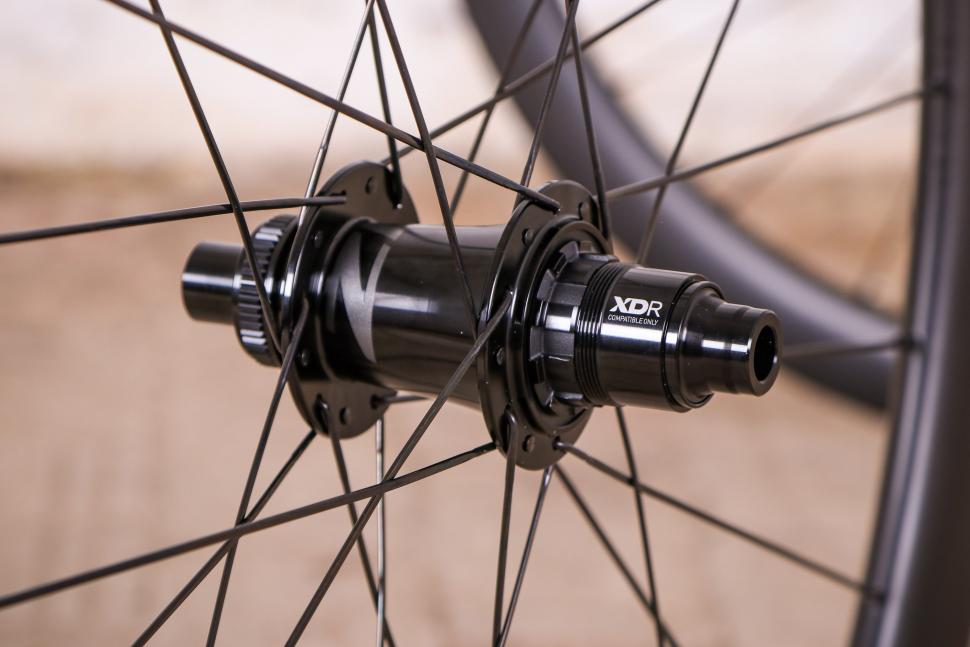
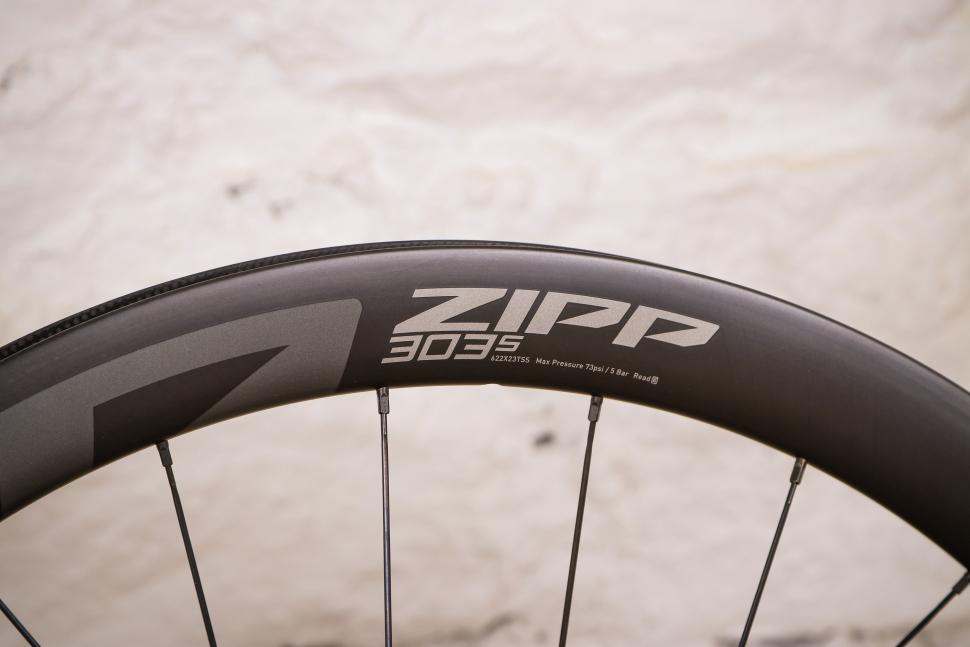

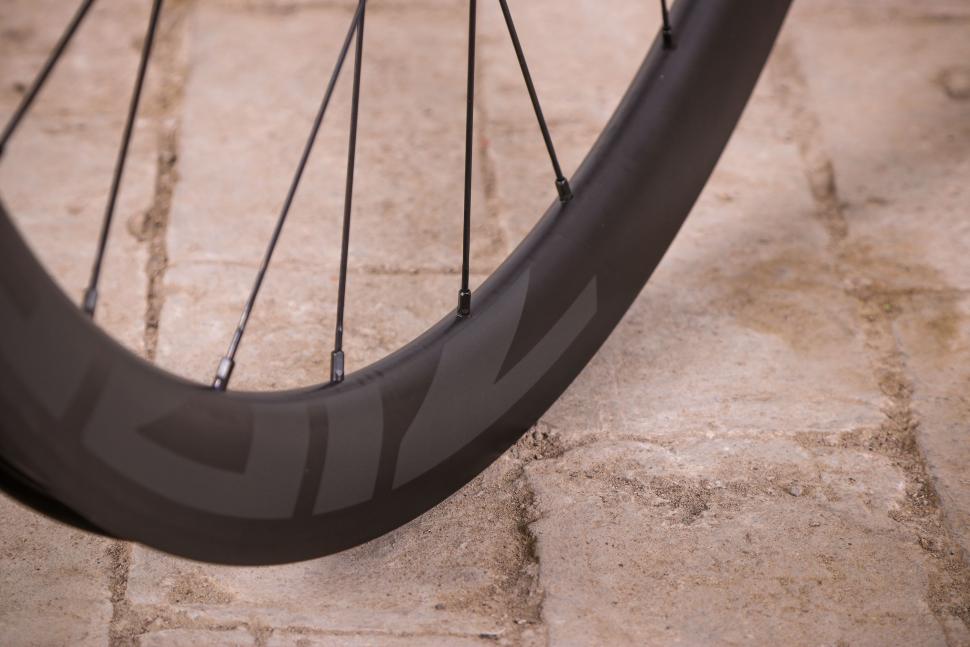


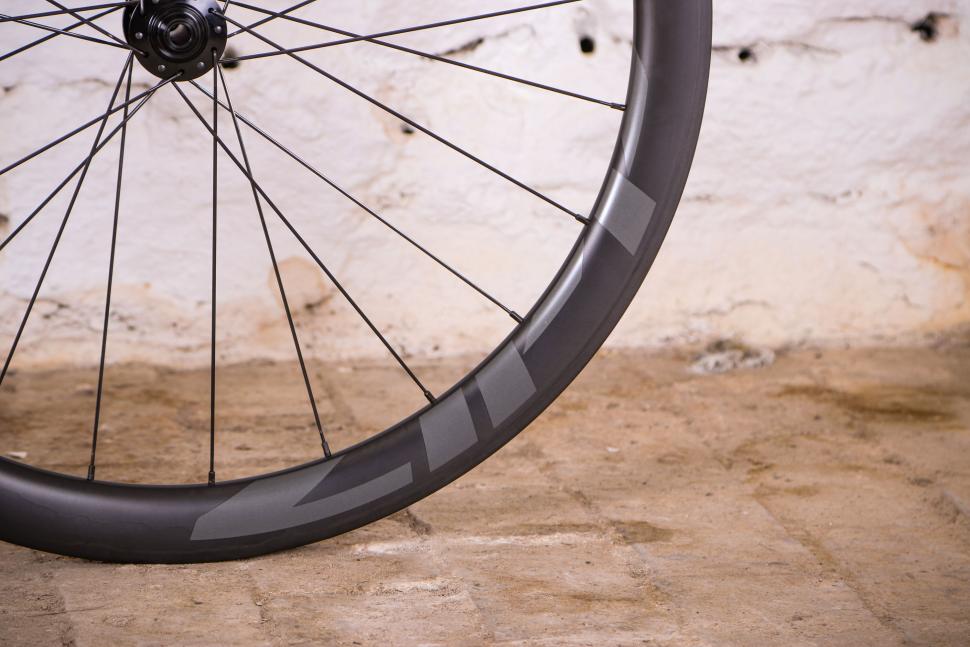
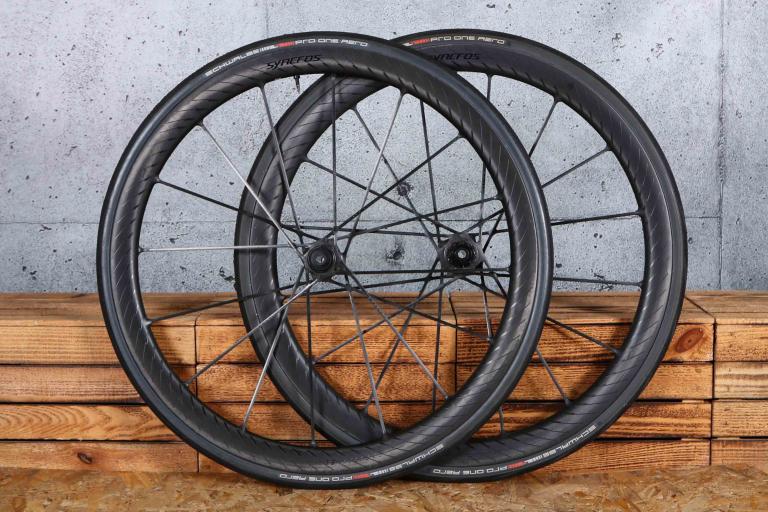
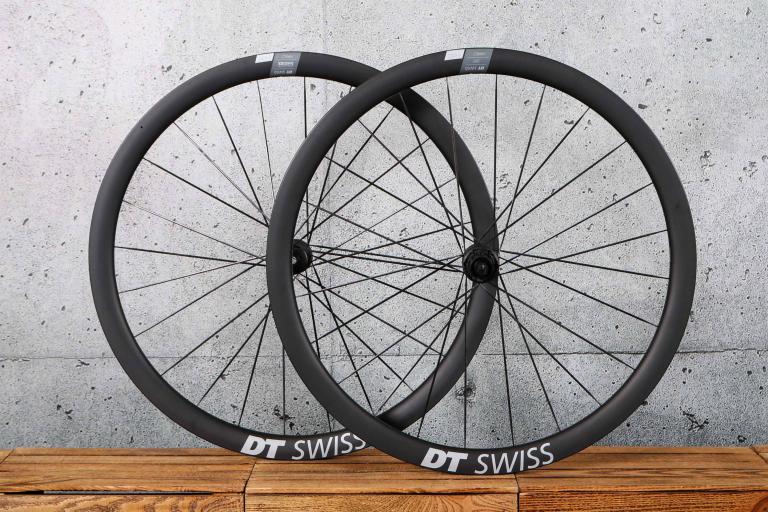
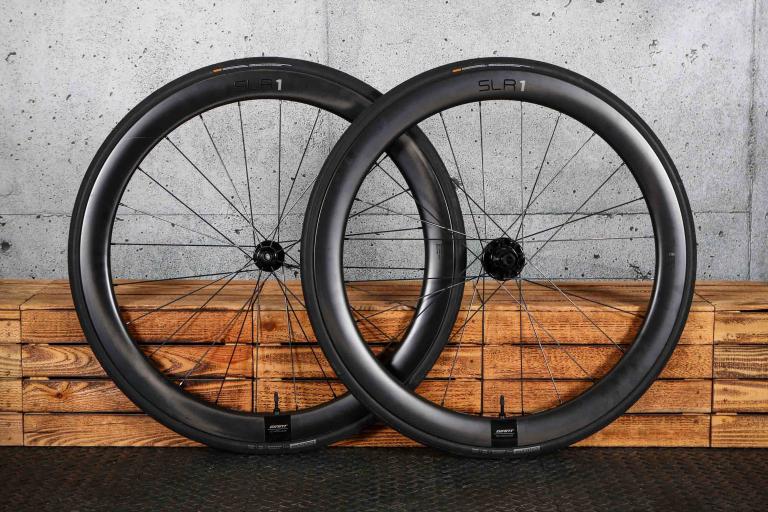
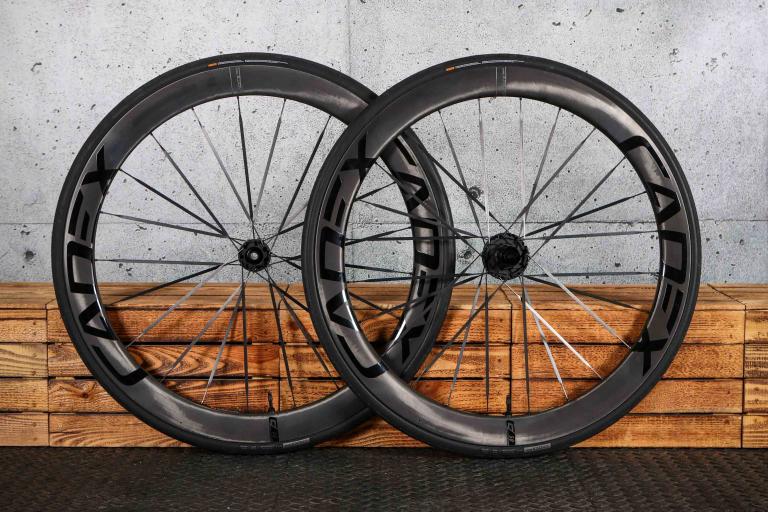
Add new comment
22 comments
Don't buy these wheels based on warranty, as the Zipp warranty is worthless for most people I suspect. I had a cracked rim on a 303 FC after about 15 months of normal road usage. The retailer sent it to Zipp who said it was caused by "impact" so the warranty doesn't apply (unless I can prove there is a manufacturing defect).
I made the mistake of buying expensive carbon wheels thinking the manufacturer would stand behind them - don't do the same. I will obviously never buy a SRAM or Zipp product again, and now unlikely to spend that much on wheels. (Though to be fair, a friend has had a Bontrager wheel replaced under similar circumstances, except wheels were newer).
I was about to buy a pair of Roval CL50s before seeing this. Is it worth waiting for these now or are the Rovals still a better wheel? They are £300 more than the 303S. What do the experts/Roval riders out there think?
There are many carbon wheels at this price point that come in at around 1500g, so not light (infact heavier that some of the better alloy wheels - but arguably more robust).
The hubs may be where they've saved the money, if that's any use. In the past Zipp has been criticised for their hub quality. I think Rovals come with DT Swiss 350s....which is a one of their lower end hubs with a lower-tooth ratchet too - but that can be upgraded to a 54 tooth ratchet for about GBP 100.
Thanks for the advice Chris, anything else I should be looking at around this price point in a mid depth carbon wdisc wheel. The DT Swiss ERC 1400? They have the 240 hubs.
... i think the issue you'll have is the price point - especially if you want carbon rims and better hubs - there's not a great deal around - but as Road.cc reviews loads of wheels, I'd have a look in the reviews archive.
One way you could get better value for money is by getting some built specifically. If not, check out Reynolds wheels, they were a carbon pioneer. I've also got a softspot for Bontrager wheels, but they might be more expensive.
I guess the thing to bear in mind is that the Zipps are a compromise - an attempt by Zipp to produce cheaper wheels, access a slightly different market segment by putting their logo on a Taiwanese wheel, and charge a higher margin. Nothing wrong with that - or Taiwan, by the way - Taiwanese factories manufacture some of the best bikes and components in the world. It's just that their production costs are lower.
I've very nearly settled on these if my bank account/significant other/fear of being a try-hard permits:
https://thecycleclinic.co.uk/products/borg-carbon-disc-brake-wheelset-ro...
Borg wheels are generally reviewed very well, and if you dig about on t'internet you can even find threads on the hubs being designed from the ground up.
They're heavy.
Why can't Zipp with all that tech. knowledge etc be able to drop
200gms on these?
They probably could but then the price would be twice as much. For a robust all-road (can I use that term?) carbon wheelset, that's not bad - OK, it's not up there in terms of ultralight climbing wheels but that's not what it's there for.
It's only about 100g more than Mavic's top of the range gravel wheels (Allroad Pro) and <100g more than their Ksyrium Pro Carbon Disc and both those wheelsets are £1800.
Plus it's very refreshing to read a review of wheels that doesn't bang on incessantly about saving you 4 seconds at 40kph for all those occasions where you find yourself riding in a wind tunnel!
I can't seem to find a listing for them in the UK for sale anywhere? Anyone got any ideas where I could get hold of a pair soon?
I have them available from 25th May at my store in South Norfolk
Hookless design again, means not compatible with Continental GP5000 TL.
That's a shame.
Also if you follow the suggestion from Silca on tyre widths (105% rule of thumb) the 27mm external dimension would seem to be more suitable for a 25mm tyre than 28mm.
Anyone that knows about these things care to comment?
I'm not going to be smart-arsey and say anything about not reading the review but Matt does say:
but Matt does say:
"Unlike other road wheelsets that feature a straight-sided tubeless rim wall, Zipp doesn't put any restriction on the brand of tyre used, which even includes the Continental GP5000 TL which is labelled as 'for hooked rims only'."
And a bit later he says he tried them with them too.
Or maybe like me they read that and could not resolve the apparent contradiction
You can say what you like, I don't mind, 'cause I did actually miss that bit. Thanks for pointing it out.
My point was about the contradiction though, do we trust Continental or Zipp here?
Do Zipp explicitly say that a GP5K is safe or do they just omit mentioning it at all? Is them saying "suitable for all tubeless tyres" just general marketing that we should take with a pinch of salt, like the rim dimples (they do look cool though)?
When you're rolling down a fast decent will there be a little doubt in the back of your head that tyre could blow off the rim?
Actually, Zipp has got in touch to say although it tested the wheels with the GP5000TL, it doesn’t want to go against any restrictions given by Conti, and the review has been amended to reflect that.
Thanks Tass. Probably the safer option.
Ah - scratch that, must have been typing this when your update came in Tass - cheers
Interesting, just looking at the article now it says(emphasis mine)Is this an edit ? If so, it would seem to contradict the previous version - even given that Matt didn't have any issues with the GP5000s during the test period. Like some others here, i'd be tempted to err on the side of safety and go with the tyre manufacturer myself - certainly in anything 30mm and under with the pressures you'd maybe want - 40mm+ with a decent bead, I wouldn't worry (even ETRTO only mandate rim hooks above 5.5bar, which is above the recommended maximum for this wheelset). That said hookless rims are lot safer than sometimes made out, but there's a lot of matching to be made between tyre and rim.
FWIW : Just found out while digging some more that ENVE have a list of tyres they've tested and approved with recommended maximum pressures / width etc, quite interesting
https://enve.app.box.com/s/cemf4aqrr1rcajwif4jh7jpcwoaprne4
This VeloNews article has some good stuff
https://www.velonews.com/gear/tech-faq-hooked-vs-hookless-rims-tire-choi...
In this instance I'd trust the tyre manufacturer over the wheel manufacturer, if they go as far as to state on the sidewall not to mount of hookless rims I'd follow that advice.
Apparently it's because GP5000's TL have a larger bead than other tubeless tyres (Which is true in my personal experience) and the beadlock on hookless rims won't hold them in place.
Shame as the GP5000's are the best tubeless tyres out there (again in my personal opinion)
And yes, the 105% rule would imply that these rims would be perfect for 25mm tyres and would also likely stretch them out to 27-28mm anyway.
My other worry with hookless is my own incompetence.
I've found, with my only set of tubeless wheels, that I have to top the air up pretty much every other ride.
I've currently got different tyre sizes front and back and I do worry about over inflating one of them when in a rush. Currently this doesn't make much difference except to ride feel but if you've got hookless with a lower presure limit is this going to become critically important?
I'm sure there's ways to protect against that (taking better care of what you do for starters) but it is something I'm keeping in mind at the moment when looking at wheels. ...or I could just be making a fuss over nothing when presented with a newer rim design.
Or wheel manufacturers could continue to manufacture wheels with hooks on the rims!
Clearly these Zipp's have been made to hit a price point and the simpler design of a hookless rim means cheaper manufacturing costs as well as a weight saving which makes the spec sheet look good.
They're often a bit more robust against rim strikes (one of the reasons they're popular in MTB) - that seems to fit in with a broader range of uses they might be aiming for, TL/TLR only spec etc. Plus cheaper as mentioned. They are still making hook rim wheels, doubt anyone is going to be stopping that anytime soon...